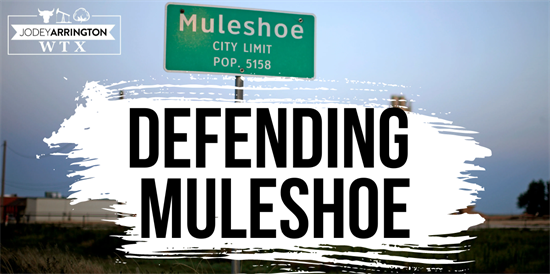Press Releases
Arrington Demands Answers from Fish and Wildlife Regarding its Efforts to Expand Muleshoe Wildlife Refuge Through Acquisition of Private Land
Washington,
July 1, 2024
Washington, D.C. – Today, Chairman Jodey Arrington (TX-19) expressed his concerns to the Director of the U.S. Fish and Wildlife Service (USFWS) regarding its efforts to expand the Muleshoe National Wildlife Refuge with the acquisition of private land through the Land and Water Conservation Fund, Migratory Bird Conservation Commission, and North American Wetlands Conservation Act. “The land included in USFWS’s Conservation Partnership Area (CPA) – like much of rural America – is critical to our nation’s supply of agriculture and energy,” wrote Chairman Arrington in part. “When the federal government enacts policies that could interfere with the day-to-day lives of the hard-working farmers, ranchers, and energy producers who depend on this land for their livelihoods and on whom we depend for our nation’s food security and energy independence, my first instinct will always be to defend their rights, their way of life, and the future of rural America.” A signed PDF of the letter is available here. Full text of the letter is as follows: Dear Director Williams, I write today to express concern about the U.S. Fish and Wildlife Service’s “Final Land Protection Plan & Environmental Assessment” for the Muleshoe National Wildlife Refuge. It is my understanding that the ultimate goal of this plan is to expand federal land in my district from 6,400 acres to 700,000 acres for the purpose of preserving sandhill crane, pronghorn, and lesser prairie-chicken habitats without Congressional approval or appropriate engagement with local stakeholders. While the plan states that federal land purchases and conservation easement partnerships are “voluntary” for landowners to enter into, I am concerned that this plan to expand the Muleshoe Wildlife Refuge could have negative effects that will reverberate throughout West Texas. The land included in USFWS’s Conservation Partnership Area (CPA) – like much of rural America – is critical to our nation’s supply of agriculture and energy. When the federal government enacts policies that could interfere with the day-to-day lives of the hard-working farmers, ranchers, and energy producers who depend on this land for their livelihoods and on whom we depend for our nation’s food security and energy independence, my first instinct will always be to defend their rights, their way of life, and the future of rural America. My constituents have concerns about several aspects of this plan, including how it will affect property values and taxes, if landowners will be coerced into selling their properties or enter a conservation easement, if this plan will restrict economic growth, and what the oversight process of this plan will look like. While USFWS did put out a detailed plan and environmental assessment, direct communication between the Service and county governments in my district has been lacking. Therefore, I would like to seek answers in writing on the following questions and request a response by July 11:
### |


